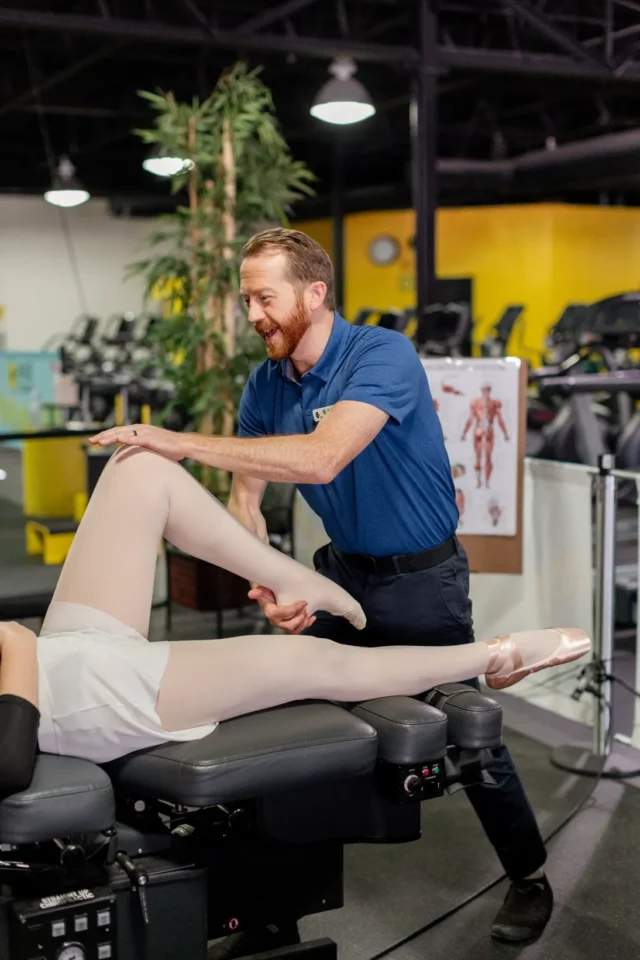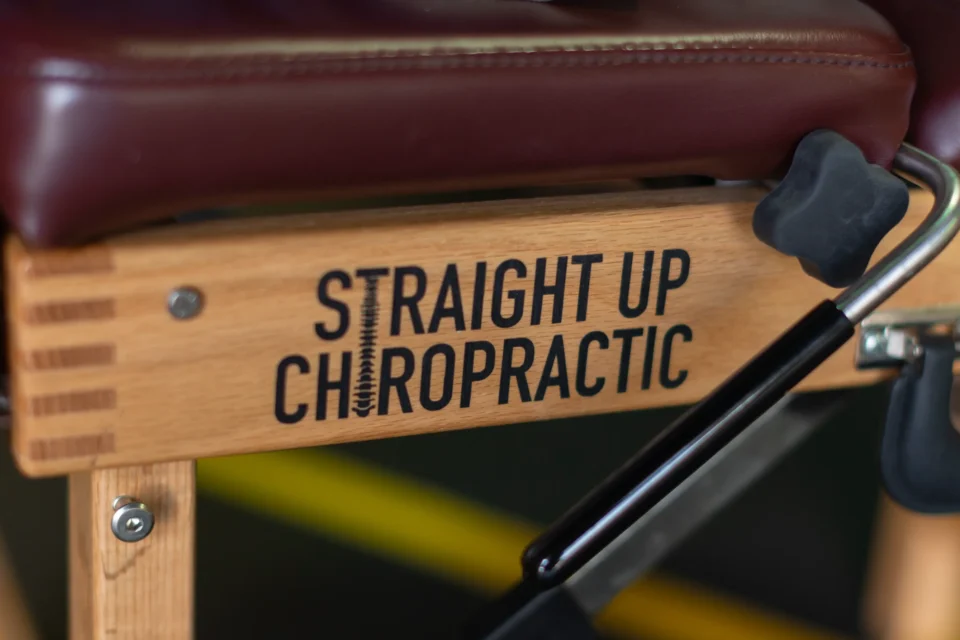Back muscle strain affects millions of people each year, causing significant pain and limiting daily activities. Understanding the causes, recognizing symptoms early, and knowing effective treatment options can help you recover faster and prevent future injuries. This comprehensive guide explores everything you need to know about back muscle strain and how advanced chiropractic techniques can provide lasting relief.
Understanding Back Muscle Strain
Back muscle strain occurs when muscle fibers in the back are stretched beyond their normal capacity or torn. This common injury can range from mild discomfort to severe pain that prevents normal movement. The back contains numerous muscles that support the spine and facilitate movement, making it particularly vulnerable to strain.
Your back muscles work together as a complex system to maintain posture, support your spine, and enable movement. When these muscles become strained, the entire system can become compromised, leading to pain, stiffness, and reduced function. Understanding how muscle strain occurs is crucial for both treatment and prevention.
The severity of back muscle strain varies significantly. Minor strains may cause mild discomfort that resolves within days, while severe strains can result in debilitating pain that lasts weeks or months without proper treatment. Recognizing the difference helps determine the appropriate course of action.
Common Causes of Back Muscle Strain
Sudden Movements and Heavy Lifting
One of the most frequent causes of back muscle strain is sudden, awkward movements or improper lifting techniques. When you lift heavy objects without proper form, your back muscles can be forced beyond their normal range of motion. This sudden stress can cause muscle fibers to stretch or tear.
Heavy lifting becomes particularly dangerous when combined with twisting motions. Your spine is designed to handle significant weight when properly aligned, but rotating while lifting creates uneven stress distribution across the muscle groups. This combination frequently results in acute muscle strain.
Sports activities that involve sudden directional changes, jumping, or explosive movements also increase the risk of back muscle strain. Athletes who participate in football, basketball, tennis, or weightlifting are particularly susceptible to these injuries.
Poor Posture and Lack of Stretching
Modern lifestyles contribute significantly to back muscle strain through prolonged poor posture. Sitting for extended periods, especially with improper ergonomics, places continuous stress on back muscles. Over time, this chronic stress weakens muscles and makes them more susceptible to strain.
Forward head posture, rounded shoulders, and excessive sitting create muscle imbalances that predispose you to injury. When muscles remain in shortened or lengthened positions for extended periods, they lose their optimal function and become more vulnerable to strain.
Lack of regular stretching and exercise compounds these issues by reducing muscle flexibility and strength. Tight, weak muscles are more likely to become strained during normal activities. Regular movement and stretching help maintain muscle health and prevent strain.
Sports-Related Injuries
Athletic activities place unique demands on back muscles, making sports-related injuries a common cause of muscle strain. Contact sports like football and hockey involve sudden impacts that can strain back muscles. Even non-contact sports like golf and tennis require repetitive motions that can lead to overuse injuries.
Weekend warriors face particular risk because they may not maintain consistent conditioning. Sudden increases in activity level without proper preparation can overwhelm muscles that aren’t accustomed to the demands. This scenario frequently leads to acute muscle strain.
Training errors, such as increasing intensity too quickly or neglecting proper warm-up routines, also contribute to sports-related back muscle strain. Proper conditioning and gradual progression help prevent these preventable injuries.
Recognizing Symptoms of Back Muscle Strain
Pain and Stiffness
The most obvious symptom of back muscle strain is pain that can range from mild discomfort to severe, debilitating pain. The pain typically develops immediately after the injury or within hours. It may be localized to the specific area of strain or radiate to surrounding regions.
Stiffness often accompanies pain, making it difficult to move normally. You may notice increased stiffness in the morning or after periods of inactivity. This stiffness occurs because injured muscles tighten to protect themselves from further damage.
The pain may worsen with certain movements, particularly bending forward, lifting, or twisting. These movements stress the injured muscles, causing increased pain and potentially worsening the injury if performed too aggressively.
Muscle Spasms and Tenderness
Muscle spasms are involuntary contractions that occur as a protective mechanism following muscle strain. These spasms can be extremely painful and may cause visible muscle twitching or a feeling that the muscle is “locked up.” Spasms typically indicate moderate to severe muscle strain.
Tenderness to touch is another common symptom. The affected area may feel sore when pressed, and you might notice swelling or inflammation around the injured muscles. This tenderness can extend beyond the immediate injury site as surrounding muscles compensate for the damaged tissue.
Heat and inflammation often accompany muscle spasms and tenderness. The affected area may feel warm to the touch and appear slightly swollen. These signs indicate the body’s natural healing response is activated.
Limited Range of Motion
Back muscle strain significantly limits your ability to move normally. You may find it difficult to bend forward, backward, or to the sides. Rotating your torso or looking over your shoulder may also become challenging and painful.
This limited range of motion serves as a protective mechanism, preventing further injury to damaged muscles. However, prolonged immobility can lead to additional stiffness and muscle weakness, potentially prolonging recovery time.
Daily activities like getting dressed, reaching for objects, or getting in and out of bed may become difficult. The severity of movement restriction often correlates with the extent of the muscle strain.
Advanced Treatment Options at Straight Up Chiropractic
Specialized Techniques: AMIT and NPI
At Straight Up Chiropractic, Dr. Gavin Hall employs cutting-edge techniques that go beyond traditional chiropractic care. Advanced Muscle Integration Technique (AMIT) specifically targets muscle imbalances that contribute to back strain. This innovative approach identifies and corrects muscle inhibitions that prevent proper healing and function.
AMIT works by restoring the neurological connection between the brain and muscles. When muscles become strained, the nervous system may inhibit their function to prevent further damage. While protective in the short term, this inhibition can persist long after the initial injury has healed, leading to chronic weakness and increased risk of re-injury.
Neural Pathway Integration (NPI) complements AMIT by addressing neurological dysfunction that contributes to muscle strain. This gentle, non-invasive technique corrects communication pathways between the brain and body, promoting proper neurological function and enhanced healing.
Dr. Hall is one of only two practitioners in Southern Utah trained in AMIT and the only chiropractor in the area certified in NPI. These advanced techniques provide comprehensive treatment that addresses the root causes of back muscle strain, not just the symptoms.
Comprehensive Full-Body Care
Unlike traditional approaches that focus solely on the injured area, Straight Up Chiropractic provides full-body care that addresses the entire musculoskeletal system. Back muscle strain often results from compensation patterns and imbalances throughout the body, requiring comprehensive treatment for optimal results.
Full-body adjustments ensure that every joint functions properly, reducing stress on the back muscles and promoting better overall alignment. When your entire body moves efficiently, individual muscle groups don’t have to work as hard, reducing the risk of strain and promoting faster healing.
This comprehensive approach also addresses extremity joints that may contribute to back problems. For example, hip dysfunction can alter movement patterns and place additional stress on back muscles. By treating the entire body, Dr. Hall ensures that all contributing factors are addressed.
Personalized Treatment Plans
Every patient receives individualized care tailored to their specific needs and goals. Dr. Hall conducts thorough evaluations to identify the unique factors contributing to each patient’s back muscle strain. This detailed assessment guides the development of personalized treatment plans that deliver optimal results.
Treatment plans may include a combination of AMIT, NPI, spinal adjustments, extremity adjustments, and specific exercises designed to restore function and prevent re-injury. The frequency and duration of treatment are adjusted based on your progress and response to care.
Patient education is an integral part of the treatment process. Dr. Hall takes time to explain your condition, treatment options, and prevention strategies. This knowledge empowers you to take an active role in your recovery and long-term health.
Prevention Strategies for Back Muscle Strain
Proper Lifting Techniques
Learning and consistently applying proper lifting techniques is crucial for preventing back muscle strain. Always bend at your knees and hips, keeping your back straight when lifting objects. Hold items close to your body and avoid twisting while lifting.
Test the weight of an object before attempting to lift it. If it feels too heavy, get help or use mechanical aids like dollies or lifting belts. Remember that your lifting capacity may vary based on your energy level, recent activity, and overall health.
Plan your lifting activities by clearing pathways and ensuring you have a secure grip. Rushing through lifting tasks increases the risk of using poor form and sustaining injury. Taking time to lift properly prevents costly injuries and time away from activities you enjoy.
Regular Stretching and Exercise
Maintaining muscle flexibility and strength through regular stretching and exercise is essential for preventing back muscle strain. Focus on stretches that target the hip flexors, hamstrings, and back muscles. Hold stretches for at least 30 seconds and perform them consistently.
Strengthening exercises should target the core muscles, including the abdominals, back muscles, and hip muscles. These muscles work together to provide stability and support for the spine. Strong core muscles reduce the load on individual back muscles and improve overall function.
Incorporate both flexibility and strength training into your routine. Aim for at least 30 minutes of moderate exercise most days of the week. Activities like walking, swimming, and yoga provide excellent benefits for back health while being gentle on the joints.
Maintaining Good Posture
Poor posture places continuous stress on back muscles, making them more susceptible to strain. Set up your workspace ergonomically with your computer screen at eye level, feet flat on the floor, and back supported by your chair.
Take regular breaks from sitting to stand, stretch, and move around. The human body is designed for movement, and prolonged static positions can lead to muscle imbalances and strain. Set reminders to change positions every 30-60 minutes.
Practice good posture awareness throughout the day. Keep your shoulders back, chin tucked, and maintain the natural curves of your spine. Initially, maintaining proper posture may feel uncomfortable, but it becomes natural with consistent practice.
Your Path to Recovery and Optimal Health
Back muscle strain doesn’t have to limit your activities or diminish your quality of life. With proper understanding, advanced treatment techniques, and effective prevention strategies, you can recover from current injuries and prevent future problems.
Dr. Gavin Hall’s innovative approach at Straight Up Chiropractic combines cutting-edge techniques with personalized care to address the root causes of back muscle strain. His expertise in AMIT and NPI, combined with comprehensive full-body care, provides patients with superior treatment options not available elsewhere in Southern Utah.
The journey to optimal health begins with taking the first step. Don’t let back muscle strain hold you back from living your best life. Contact Straight Up Chiropractic today.



